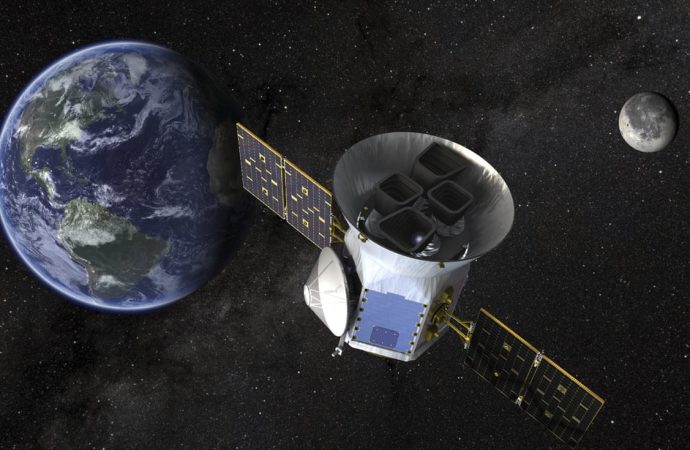Tess mission has detected three new planets and six supernovae in its first three months
Three new planets and six supernovae outside our solar system have been observed by Nasa’s planet-hunting Tess mission in its first three months.
Since it started surveying the sky in July, the MIT-led Transiting Exoplanet Survey Satellite project has identified Pi Mensae c, a “super-Earth” that travels around its star every six days, and LHS 3844b, a rocky world with an orbit of only 11 hours.
The most recent exoplanet discovery, named HD 21749b, has the longest orbital period at 36 days. It orbits a bright, nearby dwarf star about 53 light years away in the Reticulum constellation, and is thought to have a surface temperature of about 150C (300F). This is relatively cool considering its proximity to its star.
Diana Dragomir, a Hubble fellow at MIT’s Kavli Institute for Astrophysics and Space Research who led the discovery team, said: “It’s the coolest planet we know of around a star this bright. It’s very hard to find small planets that orbit farther from their stars, and are therefore cooler. But here we were lucky, and can now study this one in more detail.”
The new planet is about three times the size and 23 times as massive as Earth, meaning it is likely to be gaseous rather than rocky, and it has an atmosphere more dense than Neptune or Uranus. Its discovery was announced by scientists at the annual American Astronomical Society meeting in Seattle.

Tess will spend about two years surveying 200,000 of the brightest stars near the sun to search for planets outside our solar system. Photograph: AFP/Getty
The researchers have also detected evidence of another planet which, if confirmed, could be the first Earth-sized discovery by Tess.
Johanna Teske, a Hubble fellow and co-author of the report, said: “I’m very interested to know whether [it] has an Earth-like density to match its Earth-like radius – this will contribute to our understanding whether Earth-sized planets have diverse compositions or are all roughly similar to Earth.”
Tess monitors sections of the sky and waits for momentary dips in the light of about 200,000 nearby stars, likely to be a sign that a planet has passed in front of that star.
Tess has also detected dozens of short-lived events, including images of six supernovae in distant galaxies that were later seen by ground-based telescopes.
George Ricker, the mission’s principal investigator at MIT, predicted further discoveries: “We’re only halfway through Tess’s first year of operations and the data floodgates are just beginning to open.”
Source: The Guardian

































Leave a Comment
You must be logged in to post a comment.